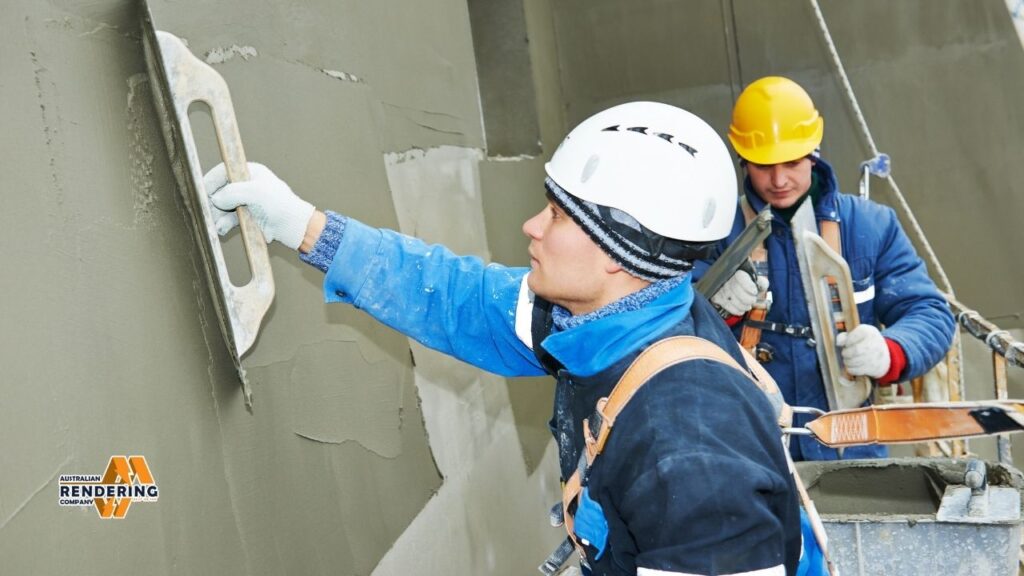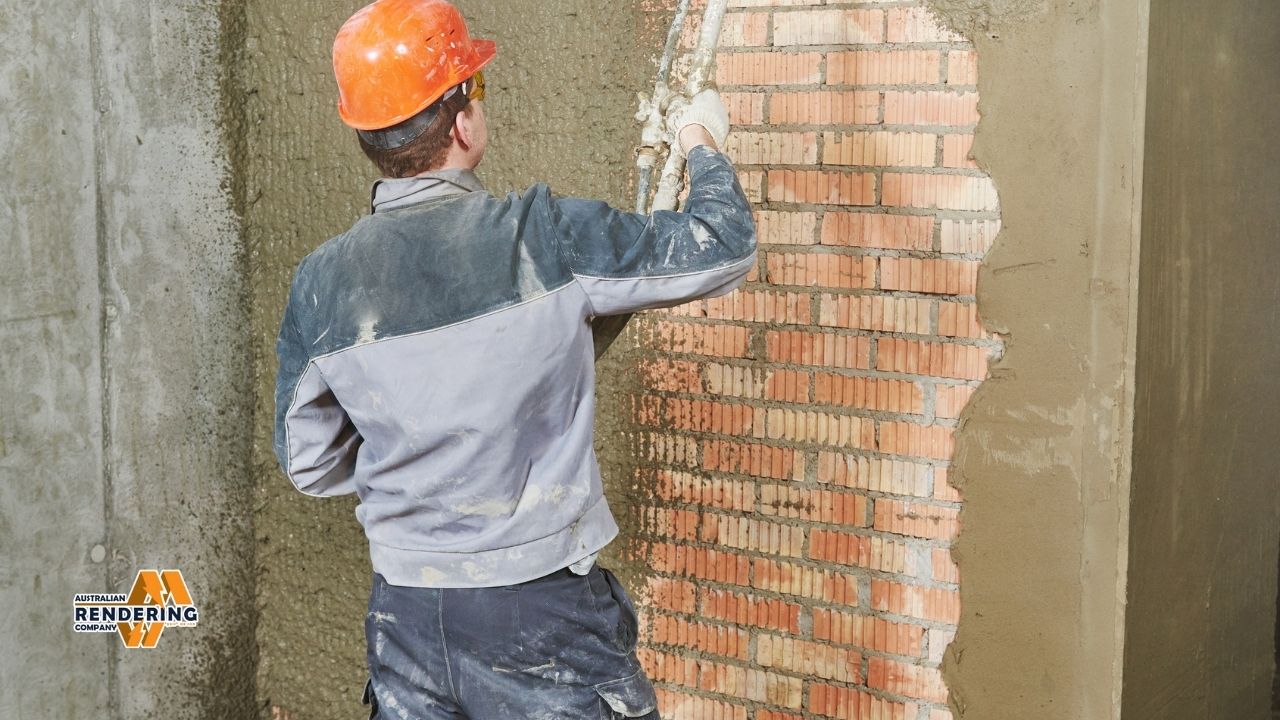Selecting the right rendering for your home is a big deal. It makes your house look different, but more importantly, protects it from the elements. When it comes to selection, there are a variety of rendering types available, each with its own merits and demerits. The following writing will explain the different types of rendering so that you can choose which type of render is best suited to the needs of you and your property.
What is Rendering?
What is rendering? Think of it like a new skin for your house. The idea of rendering (or what is rendering in construction) means covering the outer walls with a blend of materials — such as cement render. It keeps out the water and makes walls either smooth or textured. And it makes your home nicer to look at. Cement rendering is a good, hard-wearing finish found in many homes.

Why Render Your Home?
Rendering does more than just make your house pretty. It shields the walls from rain, wind, and sunshine. It will also help in heating your home during winters and cooling it during summer. On top of that, a good render finish could increase the value of your home.
Types of Rendering Available
NOTE: There are a lot of different kinds of rendering available. Knowing about the options for render is the first step into selecting the best one for your home. Below are some different types of render you may consider:
Cement Render
One of the common types of rendering is cement render. What is cement render? It is a combination of cement, sand, and water. Occasionally, some will also add a bit of lime mixed in to facilitate handling. Cement rendering is tough and remains long-lasting. It’s a common kind of house render because it’s quite suitable for anyone that wants a thin-walling, water-resistant, and cheap option.
Different Cement Render Finishes
There are a range of styles of cement render finishes. Your choice of cement render finish works towards enhancing the appearance of your house. Here are a few options:
- Sleek Look: It is the smooth, even flat surface giving a neat and contemporary look.
- Textured Finish: These have bumps or patterns. It can also cover up minor issues within the wall.
- Roughcast Finish: Extremely uneven and rough surface. A cement render with small stones thrown in.
- Scraped Finish: This finish is one in which the cement render is scraped just before it sets. This makes a unique look.
Australian Rendering Company has over 30 years of experience as a rendering and plastering company in Melbourne. Focusing on cement rendering, acrylic, and cladding, they provide durable and clean finishes. Call them on 0466943872 or email: contact@australianrenderingcompany.com.au.
Advantages of Cement Render
Cement render has many advantages:
- It’s powerful and enduring.
- It shields your home from the elements.
- Less expensive than other types of render.
Cement Render Cons
However, cement render is not without its cons:
- If the ground shifts, or if it is not laid properly, it can crack.
- Getting it on can be a lengthy endeavor.
- It could use fresh paint to look its best.
Acrylic Render
Another option is acrylic render. Its flexibility is due to the fact it is made with acrylic resins, whereas cement render is much more brittle. That means it has lower chances of cracking. Acrylic render is one of the most attractive-looking textures available on the market to use in your construction and it has heaps of colors available. Considered one of the best finishes for house rendering.
Advantages of Acrylic Render
The good things about acrylic render are:
- This one is somewhat flexible and hard to break.
- It comes in many colors.
- It’s quick to put on.
Acrylic Render Disadvantages
However, acrylic render does have some downsides — such as:
- Can be pricier than cement render.
- Not as durable as cement render.
Polymer Render
What is Polymer Render? Ideally, polymer render is something like an acrylic render. The polymers in it also make it flexible. Polymer render is also excellent in keeping water out and can appear very contemporary.
Advantages of Polymer Render
Here are the advantages of polymer render:
- Extremely flexible and crack resistant.
- It’s great at preventing water intrusion.
- It can look very stylish.
Negative Sides of Polymer Render
However, polymer render comes with some disadvantages too:
- It may be one of the most expensive choices.
- That may require a different primer.
Lime Render
Lime render is a traditional render. Made from lime, sand, and water. The breathability of Lime render within the walls can help to prevent damp. Commonly found on older buildings.
Advantages of Lime Render
The positives of lime render include:
- It lets walls breathe.
- This is great for buildings that are older.
- This one is eco-friendly.
Disadvantages of Lime Render
However, lime render also boasts a few downsides:
- A cement render is relatively hard in comparison, whereas a lime render is softer.
- It can take longer to put on.
- It might need more care.
Silicone Render
Silicone render is a newer type of rendering. It has very good water resistance, as it is made with silicone. It also does not require any cleaning regarding stains as silicone render stays clean for a longer time and has a wide variety of colors.
Advantages of Silicone Render
Of course, there are also some major benefits that silicone render brings:
- It does a pretty good job of keeping water out.
- It is very good for a longer time to keep clean.
- It comes in many colors.
Silicone Render Pros and Cons
However, silicone render also has its downsides:
- It can be expensive.
- This is likely not applicable to every wall, however.
What Type of Render to Use?
Which Types of Rendering Are Right For Your Home? What sort of render is best comes down to a few factors. Consider the costs, the type of home you live in, and your climate.
Consider Your Budget
The price of rendering varies between types. Cement render is typically the most affordable. More expensive are options like acrylic and silicone render. Consider your maximum budget before you select a render.
Consider Your Home’s Style
The style of your home is important. For old houses, lime render is good. Then perhaps a more modern house would look better with an acrylic or silicone render. Make sure the more modern details, like the type of exterior render used, fit with the style of the house.
Consider the Weather
If you live in a wet part of the world, then choose a render that is good at keeping water out! Sounds like a good option — silicone render. Choose a render that has the ability to reflect the heat of sunlight, especially if you live in a hot region. This, in turn, could help maintain cooler temperatures in your home. House types of render must complement the surroundings.
Cement Render Vs Acrylic Render
Which is better: cement render or acrylic render? Cement render is less expensive and more sturdy. Acrylic render is more flexible and more colors are available. It just might focus your mind on what matters to you most. Choose cement render if you’re after something durable and economical. If you want something a bit neater and less likely to crack, go for the acrylic render.
Applying Render
Rendering a house is a lot of work. Get a pro to do it (October 2023). They have the right mixture of render and know how to lay it so it stays. This can result in issues in the future when the rendering step is poorly executed.
Preparing the Walls
The walls must be clean and even before they are rendered. All cracks or holes need to be repaired. This ensures that the render stays on the wall as it should.
Mixing the Render
Mixing the render is very crucial. Add required water and mix thoroughly. If the render is too wet or too dry it will not function correctly.
Applying the Render
Put the render on in layers. Allow to dry between each layer you apply. This helps to prevent the render from cracking and also strengthens it.
Maintaining Your Render
Feel free to clean your render once a year to keep it in a good condition. Use a water pigmented brush because it’s soft. Make repairs immediately if you notice cracks. This will prevent water from entering and doing additional damage. House render types just need some maintenance to look great.
Repairing Cracks
All types of rendering can develop cracks at some point. If it is a small hairline crack, clear it out and fill it with render repair mix. Professionals will be needed for big cracks. Wall Crack Repair — Australian Rendering Company also extends the capability of wall crack repairs.
Cleaning the Render
Make sure to clean your render every year to ensure it looks nice. Dip into water with a soft brush. A gentle soap can be used if required as well. Never use a pressure washer because it could destroy the render.
Types of Wall Rendering
There are different types which can be used to address a specific need or a specific taste. Depending on the age and material of the building and type of finish you are after, the variation of rendering can obviously change. Choosing the right type of render for external use can yield the best results.
Traditional Rendering
Normally, these are renders based on cement or lime. It’s a solid and well-proven method with decent durability and weather resistance. In traditional applications, it is cement render that accounts for the majority of use.
Modern Rendering
These days rendering includes acrylic, polymer, and also silicone-based renders. This provides better flexibility, resistance to water, and more finishes. Modern rendering offers elegant, modern appearances.
What kind of render is good for my property?
The ideal render depends on your budget, the style of your home, and the weather in your area. If you want inexpensive and durable, then it is better to opt for cement render. Acrylic render is also a better option if you are looking for something that looks good, while also being a low cracking option. If water resistance is your concern, silicone render is the way to go.
How long does render last?
How long render lasts will really depend on the type of render used and how well that render is maintained. Provided it applies correctly and kept clean, a cement render should last for several years. While not as long lasting, acrylic and silicone render can easily last for plenty of years if looked after properly.
Can I paint over render?
Yes, of course. Use exterior wall paint. Before you are painting on the render, ensure that it is clean and not wet. Painting is the way to protection and, at the same time, gives it a little polish.
How much does rendering cost?
The cost depends on the type of render, as well as your house size, but typically ranges between $45 and $85 per square meter. Usually, the least expensive option is cement render. However, acrylic and silicone render may be pricier. Always get quotes from multiple companies before settling on one.




